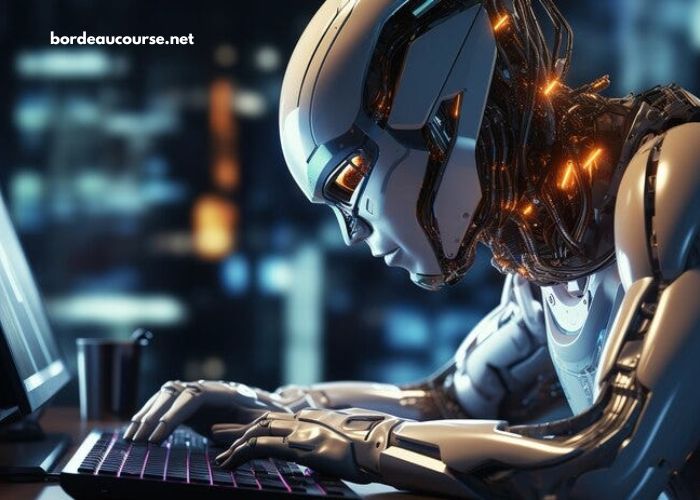Technology is evolving at a lightning pace, and 2025 is poised to be a landmark year filled with transformative innovations. From artificial intelligence and quantum computing to sustainable tech and immersive digital experiences, the future is not just on its way — it’s already here. This step-by-step guide breaks down the top tech trends to watch in 2025, empowering professionals, entrepreneurs, and enthusiasts to stay ahead of the curve.
H2: Artificial Intelligence: The New Brainpower of Business
H3: Generative AI Becomes Standard
Generative AI tools like ChatGPT, Midjourney, and Google Gemini have made headlines in recent years. In 2025, they are no longer novelties — they are embedded into business models. From automated content creation to dynamic data analysis, AI is revolutionizing workflows and enhancing productivity.
H3: AI-Powered Decision Making
Advanced algorithms now provide real-time insights, enabling smarter and faster decision-making. AI tools are increasingly being used for predictive modeling, risk assessment, and customer behavior analytics across industries such as healthcare, finance, and retail.
H3: Personalized Customer Experiences
Hyper-personalization driven by AI is redefining customer engagement. Brands in 2025 utilize machine learning to tailor experiences at an individual level, boosting satisfaction and loyalty.
H2: Quantum Computing: Pushing Boundaries Beyond Binary
H3: From Labs to Enterprises
Quantum computing has stepped out of the laboratory and into the corporate world. In 2025, companies in logistics, finance, and pharmaceuticals are using quantum simulations for supply chain optimization, fraud detection, and drug discovery.
H3: Quantum-as-a-Service (QaaS)
Cloud-based platforms now offer Quantum-as-a-Service (QaaS), allowing businesses to experiment with quantum algorithms without building their own infrastructure. Tech giants like IBM, Google, and Amazon are leading the way with robust quantum cloud solutions.
H2: Sustainable Technology: Greener Innovation
H3: Green Data Centers
Data centers are becoming eco-friendly, using renewable energy sources and AI-powered cooling systems. In 2025, carbon-neutral and even carbon-negative facilities are emerging as industry standards.
H3: Smart Energy Management
IoT and AI are being utilized for smarter energy distribution. Smart grids, predictive energy models, and solar integration are contributing to more efficient consumption and reduced environmental impact.
H3: Biodegradable Electronics
The rise of e-waste has spurred innovation in biodegradable and recyclable electronics. Tech companies are producing gadgets using sustainable materials without compromising on performance.
H2: The Rise of Spatial Computing
H3: The Era of Mixed Reality (MR)
2025 sees the integration of AR (Augmented Reality), VR (Virtual Reality), and MR (Mixed Reality) into daily life. Devices like Apple Vision Pro and Meta Quest 3 are redefining the way we work, learn, and play.
H3: Virtual Collaboration & Training
Businesses are using immersive tech for remote collaboration, virtual meetings, and employee training. Spatial computing bridges the gap between digital and physical worlds, increasing engagement and retention.
H3: Retail and Real Estate Transformation
Virtual showrooms and property tours powered by MR allow consumers to explore products and properties from anywhere, creating seamless digital experiences that drive sales.
H2: Cybersecurity: A New Paradigm
H3: AI-Driven Threat Detection
With cyber threats becoming more sophisticated, AI-based security solutions are taking center stage. These systems detect anomalies, predict threats, and respond in real-time — far beyond human capability.
H3: Zero Trust Architecture
2025 is the year of “never trust, always verify.” Zero trust models are the default security frameworks in enterprises, ensuring every user and device is authenticated continuously.
H3: Decentralized Identity Systems
Blockchain-powered digital identities are replacing traditional login systems. These decentralized systems reduce fraud and give users control over their own data.
H2: Blockchain Beyond Cryptocurrency
H3: Enterprise Blockchain Solutions
Blockchain has moved beyond Bitcoin. In 2025, it’s the backbone of supply chain transparency, smart contracts, and secure voting systems. Companies are adopting permissioned blockchains for secure and efficient operations.
H3: Tokenization of Assets
Physical assets like real estate, artwork, and even commodities are being tokenized. This trend enables fractional ownership, increased liquidity, and a broader investor base.
H3: Blockchain for Sustainability
Blockchain is used to track carbon emissions, verify ethical sourcing, and ensure transparency in ESG (Environmental, Social, and Governance) reporting.
H2: Edge Computing: Real-Time Data at the Source
H3: Shift from Cloud to Edge
As data volume grows exponentially, the focus shifts from centralized cloud storage to decentralized edge computing. This reduces latency, enhances speed, and boosts performance — especially for IoT and autonomous systems.
H3: Industrial Applications
Factories and logistics companies are integrating edge computing with AI for real-time quality checks, predictive maintenance, and fleet tracking, increasing efficiency and reducing downtime.
H3: 5G and Edge Synergy
The combination of 5G and edge computing unlocks massive opportunities for ultra-low latency applications — from smart cities to remote surgeries and autonomous vehicles.
H2: Human Augmentation: Enhancing Human Capabilities
H3: Wearable Tech Evolution
Smartwatches and fitness bands are just the beginning. In 2025, wearable devices monitor everything from glucose levels to mental stress, providing real-time health insights and preventative care.
H3: Brain-Computer Interfaces (BCI)
Startups and research institutes are developing BCIs that enable communication between the brain and external devices. This trend has enormous implications for healthcare, accessibility, and even gaming.
H3: Augmented Workforce
Exoskeletons and AI-enhanced tools are helping workers lift heavy loads, perform surgeries with precision, and interact with machines more intuitively.
H2: Autonomous Everything
H3: Self-Driving Vehicles Mature
2025 marks a turning point in autonomous transportation. While fully autonomous cars are still being tested, autonomous delivery drones, warehouse robots, and long-haul trucks are already in operation.
H3: AI in Agriculture
Autonomous tractors, drones, and sensors are transforming farming into a high-tech, data-driven industry. Smart agriculture increases yield while minimizing resource use.
H3: Urban Automation
Smart cities are deploying AI-powered traffic lights, surveillance systems, and maintenance bots to manage urban spaces more efficiently.
H2: The Future of Work and Education
H3: Hybrid Work Becomes the Norm
Work-from-home is no longer a perk — it’s a standard. In 2025, companies have adopted hybrid models supported by advanced collaboration tools and virtual workspaces.
H3: Upskilling with AI Tutors
AI-driven platforms personalize education, helping individuals learn at their own pace. Virtual tutors provide instant feedback, track progress, and adjust content in real time.
H3: Gamification of Learning
Immersive learning experiences that use gamification and interactive content are gaining popularity, making education more engaging and effective.
H2: Internet of Things (IoT): Smarter and More Secure
H3: IoT in Everyday Life
From smart fridges to connected cars, IoT continues to grow. In 2025, even cities are becoming “smart,” with sensors that optimize traffic, waste management, and energy use.
H3: Enhanced Security Protocols
As devices proliferate, so do vulnerabilities. In response, manufacturers are embedding advanced encryption and biometric security into IoT ecosystems.
H3: Interoperability and Standardization
Improved protocols are making it easier for different devices and platforms to communicate, leading to seamless and integrated IoT experiences.
H2: Voice and Language Tech Breakthroughs
H3: Real-Time Translation Devices
Global communication is easier than ever. Real-time translation tools are helping break language barriers in business, travel, and education.
H3: Conversational AI Evolution
Voice assistants are becoming more natural and context-aware. Whether it’s customer service or personal organization, conversational AI is more intuitive and efficient.
H3: Multilingual AI Interfaces
Businesses are leveraging multilingual AI to reach global markets, enhancing user experience and accessibility.
H2: Biotech and Health Innovations
H3: AI-Driven Diagnostics
Medical diagnostics powered by AI are faster and more accurate. In 2025, diseases like cancer, diabetes, and Alzheimer’s are being detected earlier through advanced imaging and data analysis.
H3: Telemedicine 2.0
Virtual healthcare is becoming more immersive and personalized. Patients consult with doctors via AR/VR platforms, making telehealth more interactive.
H3: Genomics and Personalized Medicine
Affordable genome sequencing is enabling treatments tailored to an individual’s genetic makeup, paving the way for precision medicine.
H2: Tech Ethics and Regulation
H3: Responsible AI Development
Governments and companies are prioritizing ethical AI frameworks to avoid bias, ensure transparency, and maintain accountability in algorithmic decisions.
H3: Data Privacy and User Consent
Stricter data protection laws are being enforced worldwide. Consent management tools give users greater control over how their data is collected and used.
H3: Sustainable Innovation Policies
Regulatory bodies are encouraging sustainable development, ensuring that technological progress does not come at the cost of the planet.
Conclusion
The year 2025 is shaping up to be a revolutionary one in the world of technology. From AI and quantum computing to green innovations and immersive realities, these trends are more than buzzwords — they are reshaping how we live, work, and interact. By understanding and adapting to these step-by-step tech trends, businesses and individuals can not only stay relevant but lead the way into the future.
Stay informed, stay adaptive, and most importantly, stay innovative.



